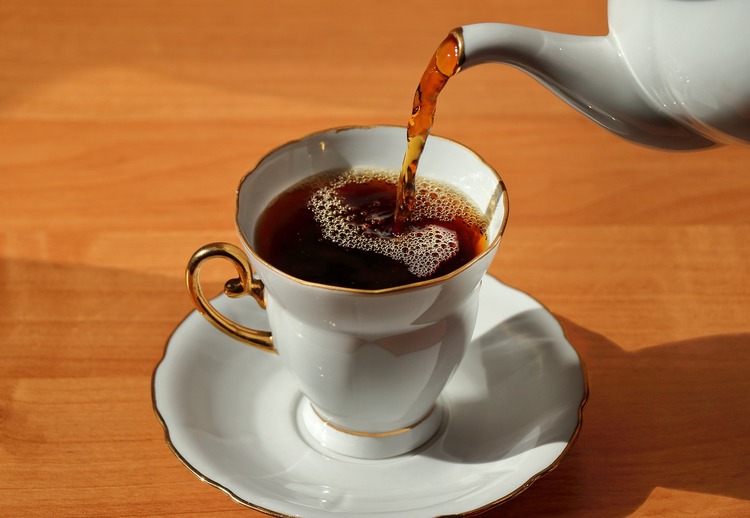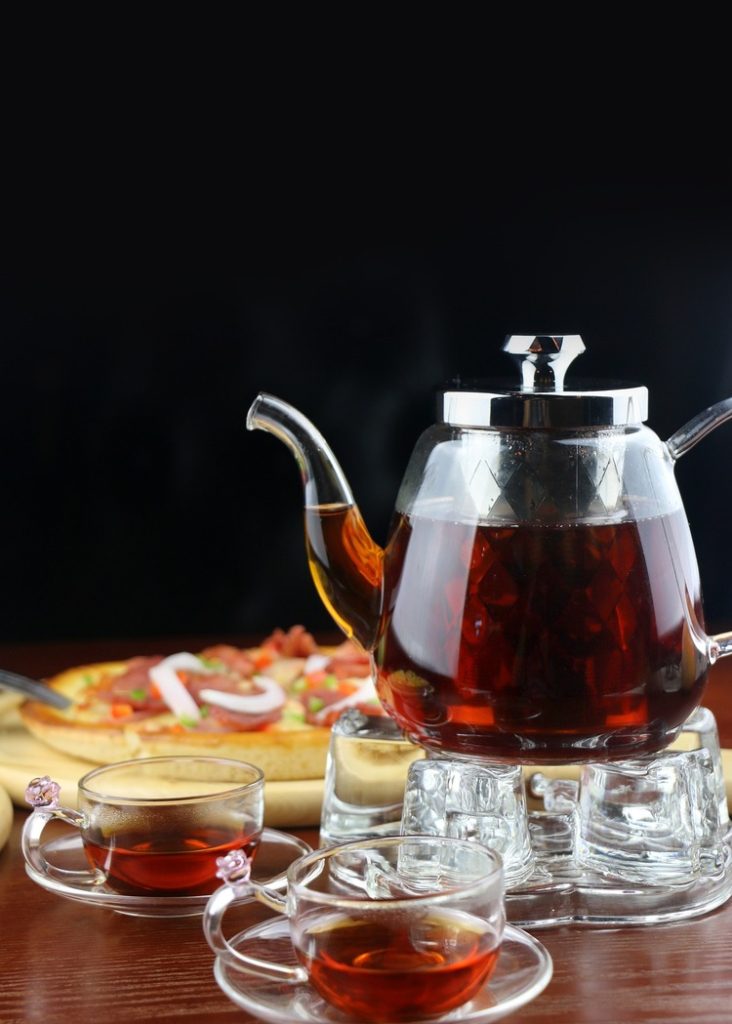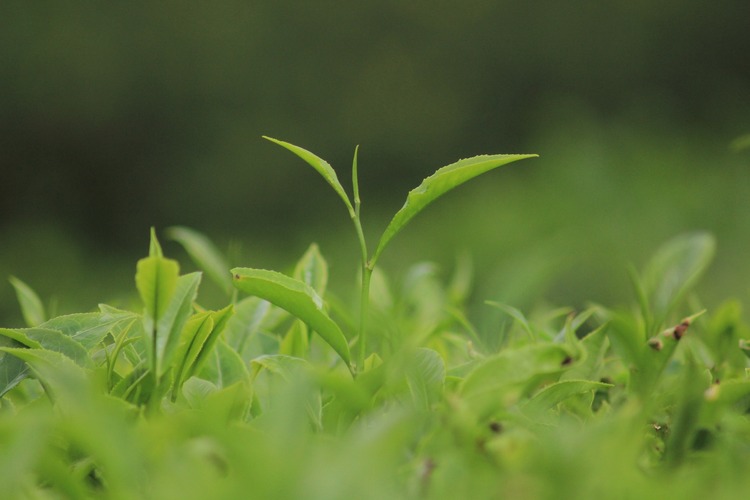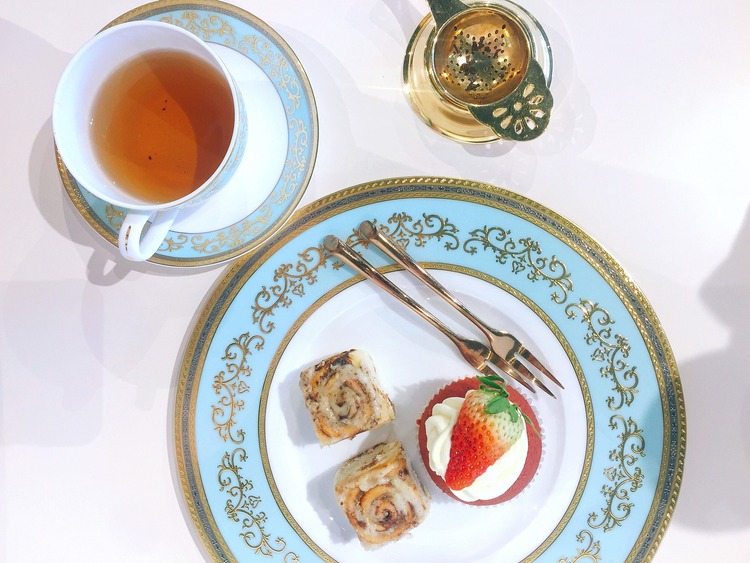What does Darjeeling tea taste like? As one of the most popular teas from India, Darjeeling tea is a black tea grown in the region of the same name.
This tea has a delicate, floral flavor with a slightly astringent aftertaste. It is often described as having a musky spiciness with hints of nuttiness and fruitiness. The taste of Darjeeling tea can vary depending on the time of year it is harvested, with the first flush having a lighter, more delicate flavor and the second flush having a stronger, more robust taste.
This article covers the different aspects that make this tea stand out among the rest.
Please note: This article contains affiliate links, meaning I may earn a commission if you make a purchase by clicking a link. Of course, this comes at no extra cost to you and helps me keep offering readers solid information.

What is Darjeeling Tea?
If you are a tea fan, you must have heard the name Darjeeling Tea at least once. This world-famous tea is grown in the Darjeeling district of West Bengal, India.
The Darjeeling district is located in the foothills of the Himalayas, and the unique geography and climate of the region give the tea its distinctive taste. The tea is grown in high-altitude estates that are spread across the region.
Darjeeling Tea is known for its high quality and is often called the “Champagne of Teas.” The tea is harvested in different flushes, which refer to the time of year when the leaves are picked. Each flush yields a different flavor profile. We will get into more details later in the article.
This tea is grown using traditional methods, and the tea leaves are hand-plucked to ensure the highest quality. The tea leaves are then processed in several steps, including withering, rolling, oxidation, and drying. This process gives Darjeeling Tea its distinctive flavor and aroma.
What Does Darjeeling Tea Taste Like?
When it comes to Darjeeling tea, the taste can be quite complex and nuanced. Here are some key flavor notes you can expect to find in this tea.
Muscatel Flavor
One of the most distinctive flavor notes in Darjeeling tea is the muscatel flavor, often described as similar to the taste of muscatel grapes. This flavor is most prominent in second-flush Darjeeling teas harvested in late spring and early summer.
Fruity Notes
In addition to the muscatel flavor, Darjeeling tea has a range of fruity notes that can vary depending on the tea. Some typical fruity notes include citrus, apricot, and peach.
Astringency and Tannin
The tea also has a noticeable astringency, which can be described as a drying sensation in the mouth. This is due to tannins in the tea, which are natural compounds found in tea leaves. Please note that the higher the quality of the tea, the less astringency you will feel (to the point that some people feel no astringency at all).
Vegetal and Floral Aroma
Darjeeling tea also has a pleasant vegetal and floral aroma, varying depending on the tea. Some typical aromas include notes of honey, lavender, and rose.
Brewing
To get the most out of your Darjeeling tea, it’s important to brew it properly. Start by heating your water to around 195-205°F, then steep the tea for 2-4 minutes, depending on the specific tea. You can also add sugar, milk, or lemon to taste, although many tea connoisseurs prefer to enjoy the tea alone.

Darjeeling Tea Flushes
As previously mentioned, Darjeeling tea is harvested in different flushes, which refer to the time of year when the tea leaves are plucked. Each flush has its own distinct flavor and aroma profile.
First Flush
The first flush, or spring flush, is harvested in mid-March to early April. This flush produces a light and delicate tea with floral and fruity notes. The tea has a pale golden color and a fresh, brisk taste.
Second Flush
The second flush, the summer flush, is harvested in late May to mid-June. This flush produces a tea with a fuller body and a musky, fruity flavor. The tea has a rich amber color and a sweet, nutty taste.
Third Flush
The third flush, the monsoon flush, is harvested in late July to early August. This flush produces a tea with a darker color and a more robust flavor. The tea has a woody, spicy taste with a hint of sweetness.
Fourth Flush
The fourth flush, the autumn flush, is harvested in mid-September to early November. This flush produces a tea with a full-bodied, musky flavor and a dark amber color. The tea has a nutty, spicy taste with a hint of sweetness.
Autumnal Flush
The autumnal flush is harvested from October to November and is a subcategory of the fourth flush. This flush produces a tea with a mellow, smooth taste and a golden color.
Darjeeling tea flushes are affected by the weather and climate of the region. The first flush is affected by the cool and dry weather of the spring season, while the second flush is affected by the warm and humid climate of the summer season. The monsoon season affects the third and fourth flushes, which brings heavy rainfall to the region.
For a tea connoisseur, trying teas from different flushes makes sense to get accustomed to the different flavor profiles.

Health Benefits of Darjeeling Tea
Drinking Darjeeling tea can provide a range of health benefits. Here are some of the ways that this tea can positively impact your health:
Antioxidants
Like other black teas, Darjeeling tea contains antioxidants, which can help protect your body from damage caused by free radicals. These unstable molecules can cause oxidative stress linked to various chronic diseases, including cancer, heart disease, and Alzheimer’s.
Polyphenols
Darjeeling tea is also rich in polyphenols, an antioxidant that can help reduce inflammation. Inflammation is believed to play a role in development of many chronic diseases, including arthritis, diabetes, and heart disease.
Heart Health
Drinking Darjeeling tea may also help improve your heart health. Some studies have found that regularly consuming black tea can help lower your blood pressure and reduce your risk of heart disease.
Darjeeling Tea vs. Other Teas
Darjeeling tea has a delicate, floral, and fruity flavor, which sets it apart from other types of tea even though it is made from the same plant as other teas. Its unique flavor is attributed to its processing method and growing region. Remember this tea’s flavor as we contrast it with other teas.
Darjeeling Tea vs. Assam Tea
Assam tea is a type of black tea grown in the Assam region of India. Darjeeling tea, on the other hand, is grown in the Darjeeling district of West Bengal, India. Assam tea is known for its strong, malty flavor and is often used in blends for breakfast teas.
Darjeeling Tea vs. Oolong Tea
Oolong tea is a partially oxidized tea that falls between green and black tea in terms of oxidation level. It is most commonly produced in China and Taiwan. Darjeeling tea and oolong tea have different flavor profiles due to their different oxidation levels. Oolong tea has a nutty and slightly sweet flavor.
Darjeeling Tea vs. Green Tea
Green tea is a type of tea that is made from unoxidized leaves and is most commonly produced in China and Japan. Due to their different processing methods, Darjeeling and green tea have different flavor profiles. Green tea has a grassy and vegetal flavor.
Darjeeling Tea vs. White Tea
White tea is a type of tea that is made from young tea leaves and buds that are plucked before they are fully open. It is the least processed type of tea and is most commonly produced in China. Due to their different processing methods, Darjeeling and white tea have different flavor profiles. White tea has a delicate and slightly sweet flavor.

Buying and Storing Darjeeling Tea
Buying Darjeeling Tea
When buying Darjeeling tea, looking for high-quality teas from reputable sources is essential. The Tea Board of India regulates the tea industry and ensures that all Darjeeling tea is authentic and high-quality. You can also look for teas from well-known estates such as Goodricke Group, Thurbo, Badamtam, Runglee Rungliot, Baresberg, and Marybong.
If you’re looking for a wider variety of Darjeeling teas, you can also check out specialty tea shops. They offer a range of Darjeeling teas at reasonable prices, including the highest grades.
Storing Darjeeling Tea
To ensure that your Darjeeling tea stays fresh and flavorful, it’s important to store it properly. Keep it in an airtight container away from light, heat, and moisture. You can also store it in the refrigerator or freezer to extend its shelf life.
By following these tips, you can enjoy Darjeeling tea’s full flavor and aroma for months to come.
Top Recommendations
You can acquire Darjeeling tea online if you do not have access to a specialty tea shop (or you do not have the time to visit). Here are some recommendations.
VAHDAM, Darjeeling Tea Leaves from Himalayas

Darjeeling Tea – Organic – Loose Leaf

Teabloom Organic Black Tea, Estate Darjeeling Loose Leaf Tea

Darjeeling First Flush FTGFOP1. 2021 Harvest

Hope you have enjoyed the article and learned something new. Let me know what your favorite Indian tea is.
To you, what does Darjeeling tea taste like?
More About Black Tea
The Process of Making Black Tea
What Does Black Tea Taste Like?
What Does Assam Tea Taste Like?
What Does Chai Tea Taste Like?